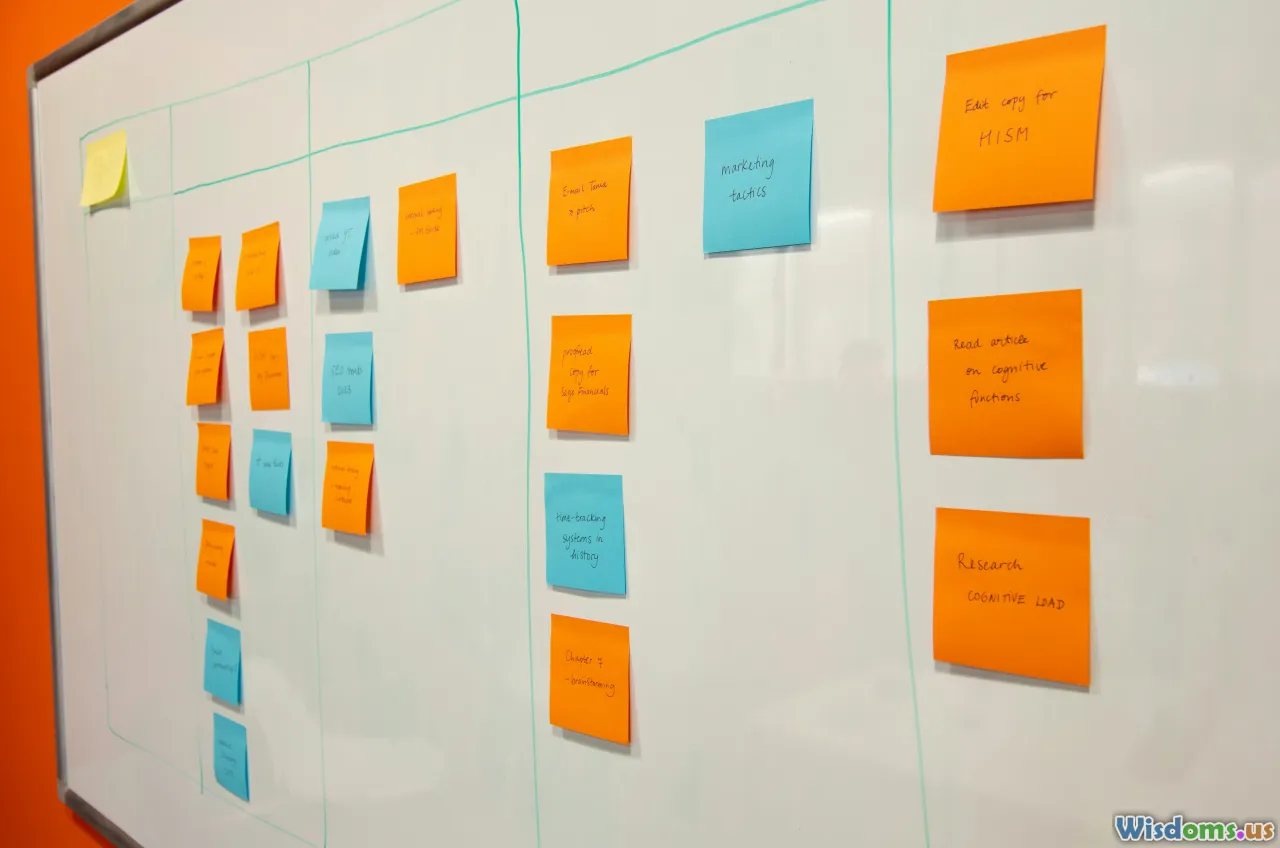
The Role Of Leadership Development In Driving Success
31 min read How leadership development builds capabilities, aligns culture, and drives measurable business outcomes through targeted programs, coaching, and data-driven practices. (0 Reviews)
Growth never happens by accident. In organizations that consistently hit their numbers, win customers, and keep their best people, you can almost always trace success back to one core engine: a deliberate, well-run system for developing leaders at every level. Leadership development is not a perk or a workshop; it is a strategy for turning potential into performance, aligning daily decisions with long-term value, and building a culture that compounds advantages over time.
Why leadership development matters now

Markets are faster, work is more distributed, and expectations are higher than ever. Consider a few realities shaping the case for leadership development today:
- Talent scarcity is real. Korn Ferry projects a global talent shortfall of roughly 85 million people by 2030. When skills are scarce, developing internal leaders becomes a competitive necessity, not a nice-to-have.
- Engagement drives performance. Gallup has repeatedly found that managers account for the majority of variance in employee engagement, and highly engaged teams see meaningful lifts in productivity, quality, and retention. In other words, leadership quality shows up in the P&L.
- Bench strength is thin. In the DDI Global Leadership Forecast, only around one in eight organizations rates its leadership bench as very strong. Thin pipelines increase risk during growth, transformation, or succession.
- Strategy needs execution muscle. The best ideas die without leaders who can translate strategy into goals, mobilize teams, and manage change. Leadership development is the bridge from vision to results.
Companies that get this right create a systemic advantage: they can move faster, make better decisions closer to customers, and avoid the thrash of constant rehiring. They also become magnets for talent because people can see a future for themselves.
From potential to performance: clarifying the target

Leadership development only works if it is anchored to a clear definition of what great leadership looks like in your context. A robust competency model translates values and strategy into observable behaviors. It answers questions like: What does good judgment look like here? How do we expect managers to set direction, coach people, and steward resources?
A practical starting set often includes:
- Strategic orientation: connecting daily work to a customer problem and long-term bets.
- Execution: setting priorities, managing risks and dependencies, and shipping on time.
- People leadership: coaching, feedback, motivation, and team health.
- Enterprise thinking: optimizing for the whole versus the part.
- Inclusive decision making: gathering diverse input and mitigating bias.
- Learning agility: seeking feedback, experimenting, and adapting quickly.
Example: A fintech scaleup that competes on compliance and speed might put disproportionate weight on risk management and cross-functional collaboration. A deep-tech lab might emphasize technical depth plus stakeholder storytelling. Your model should be short, testable, and embedded in hiring, promotions, performance reviews, and development plans so it becomes the operating system for leadership, not an HR poster.
The business case and how to prove ROI

Leadership development budgets are easiest to protect when they earn their keep. You can demonstrate value by connecting programs to leading and lagging indicators.
Practical metrics to track:
- Leading indicators: program completion, application of skills in the first 60 days, coaching participation, growth in internal mobility, manager quality scores, and leadership bench strength (percentage of critical roles with at least two ready successors).
- Lagging indicators: team engagement, regretted attrition, time to productivity for new managers, quality of hire, NPS or CSAT on customer-facing teams, and business KPIs linked to initiatives (e.g., cycle time reduction in operations).
A simple ROI storyline:
- Baseline. Before a manager program, measure team engagement, voluntary turnover, and key performance outcomes.
- Intervention. Run a 4-month blended journey with practice, coaching, and on-the-job projects tied to real goals.
- Transfer. Track behavior change using 180 or 360 follow-ups at 3 and 6 months.
- Outcomes. Compare participant teams against matched controls or historical averages.
Illustrative case: A regional logistics firm focused leadership development for front-line supervisors on safety rituals, feedback, and daily huddles. Within nine months, recordable incident rates dropped 18 percent, on-time dispatch improved by 7 percent, and supervisor turnover fell by 11 percent. A conservative cost-benefit analysis showed a 3.4x return driven by fewer incidents, lower overtime, and recruitment savings.
Use established frameworks like Kirkpatrick (reaction, learning, behavior, results) and Phillips for financial ROI. The Brinkerhoff Success Case Method helps tell credible stories by finding where the program made the biggest difference and analyzing why.
Build a system, not a series of events

One-off workshops create a sugar high. Sustainable leadership capability comes from a system where learning is baked into work.
Design principles:
- 70-20-10 as a design heuristic. Roughly 70 percent of development comes from stretch assignments and projects, 20 percent from coaching and feedback, and 10 percent from formal training. Use this ratio to ensure your portfolio emphasizes practice and application.
- Journey, not a day. Plan learning over months with spacing, accountability, and real deliverables. Example: a six-month new manager journey with monthly labs, peer circles, on-the-job experiments, and manager-manager coaching.
- Embed in management routines. Link development to quarterly business reviews, performance conversations, and talent reviews. When leaders know their progress will be discussed in QBRs, practice happens.
- Make it visible. Tie promotions and recognition to demonstrated behaviors in your model. People repeat what gets rewarded.
A simple flywheel: define what great looks like; select for it; build it through deliberate practice; measure and reward it; and use those insights to refine the next cohort.
Critical capabilities leaders need now

While contexts vary, several capabilities have outsized impact today:
- Sensemaking and prioritization. In noisy environments, leaders must convert ambiguity into clear next steps. Techniques include decision guardrails and time-boxed experiments.
- Psychological safety and candor. Google’s Project Aristotle highlighted psychological safety as a core driver of team effectiveness. Leaders create it by admitting mistakes, asking good questions, and rewarding dissent in decision-making processes.
- Inclusive leadership. Diverse teams outperform when leaders actively seek different perspectives and ensure equal airtime. Practices: round-robin input, structured decision protocols, and bias checks.
- Coaching and feedback. High-frequency, bite-sized feedback beats annual reviews. A simple habit: ask, What is one thing I could do differently next week to help you succeed?
- Customer-centric thinking. Leaders should map decisions to customer impact. Use customer shadowing and service blueprinting to keep external reality present in internal conversations.
- Digital fluency. You do not need to code, but you must understand data literacy, automation basics, and the collaboration stack to lead effectively in hybrid environments.
For each capability, design moments that matter. Example: Teach decision pre-mortems right before a critical project kickoff so the behavior lands when the stakes are real.
How to design a leadership development portfolio

A helpful way to think about your portfolio is as a layered architecture.
- Needs assessment. Start with business goals. Interview executives and analyze performance data to identify capability gaps. Look for moments where projects stall, talent churns, or decisions bottleneck.
- Audience segmentation. Design for specific transitions: emerging leaders, first-time managers, experienced managers, and enterprise leaders. Each group faces different problems and needs.
- Learning journeys. For each audience, plan a 4–9 month journey with spaced learning, application tasks, and reflection.
- Blended delivery. Mix short, practice-heavy workshops; on-the-job experiments; peer circles; coaching; and digital nudges.
- Measurement and governance. Set clear success outcomes and checkpoints. Review data quarterly and refine.
Practical checklist for a journey:
- Begin with a 360 or strengths assessment to personalize goals.
- Run cohort kickoff that sets norms and makes the work explicit.
- Assign a real business challenge to work on across the program.
- Schedule peer coaching circles every two weeks with structured prompts.
- Add manager-as-coach touchpoints at 30, 60, and 90 days to reinforce transfer.
- Conclude with a showcase of business impact and personal growth stories.
On-the-job development that actually moves the needle

Stretch assignments are the engine of leadership growth because they force new behaviors under real pressure. Instead of generic case studies, place participants on projects tied to strategic priorities and require application of skills.
High-impact examples:
- Customer rescue squad. Cross-functional leaders tackle a specific customer churn pattern for 12 weeks, practicing root cause analysis, stakeholder mapping, and change execution.
- Cost-to-serve improvement. Operations managers run experiments to reduce variability or waste in a core process, reporting weekly on data and decisions.
- Market entry scouting. Emerging leaders conduct discovery in a new segment, present a go-to-market hypothesis, and run a small demand test.
Make the learning explicit. Before the project, leaders identify two behaviors to practice. During, they get weekly coaching and keep a short reflection log. After, they share outcomes and lessons so the entire cohort benefits.
Coaching and mentoring that scale

Coaching multiplies the value of training by helping leaders translate ideas into action. Three scalable options:
- Internal coach pool. Train a cadre of experienced managers on core coaching skills and allocate them to cohorts for 3–5 sessions per person. This reinforces a coaching culture while keeping costs manageable.
- Peer coaching circles. Groups of 4–6 meet biweekly for 60–75 minutes with structured protocols like GROW or CLEAR. Peer circles are powerful because they normalize challenges and distribute expertise.
- Targeted external coaches. Use external coaches for pivotal transitions or senior leaders where stakes and confidentiality are high.
Mentoring, distinct from coaching, accelerates network building and sponsor support. Pair mentors and mentees around specific goals, run an orientation that clarifies expectations, and provide conversation guides so pairs make progress quickly.
Feedback, assessment, and measurement you can trust

You cannot improve what you do not measure, and you cannot measure only what is easy. Good assessment is multi-method and time-phased.
Useful tools:
- 360 assessments to set a baseline and target behaviors. Follow up at 6–9 months to verify change.
- Pulse surveys for manager quality and team climate. Use short, quarterly pulses with items tied to your competency model.
- Observation rubrics for facilitation, performance dialogues, or decision meetings. Have leaders rate themselves and exchange peer feedback in real time.
- Business KPIs such as time to decision, project cycle time, and defect rates on teams led by participants.
Evaluation frameworks:
- Kirkpatrick levels 1–4: reaction, learning, behavior, results.
- Phillips level 5: ROI, converting results to monetary terms.
- Brinkerhoff Success Case: find exemplars where the program had big impact, document what worked, and replicate.
Remember to design for measurement at the start. If the journey includes a customer rescue project, define the baseline churn, hypothesis, and target lift upfront; otherwise, you are left with stories but no evidence.
Culture and systems that make development stick

Even the best program fails in a culture that punishes risk and hoards information. Leaders grow faster when the environment supports practice.
- Psychological safety. Leaders model vulnerability by sharing their own learning goals and post-mortems. Teams should see mistakes turned into learning, not blame.
- Cadenced reviews. Run lightweight weekly or biweekly operating reviews that emphasize learning and problem-solving over status reporting.
- Decision rights clarity. Ambiguity creates churn and politicizes leadership. Document who decides what and how input is gathered, then teach leaders to run fast, high-quality decisions.
- Recognition systems. Spotlight leaders who exhibit your core behaviors, not just those who hit numbers. Over time, the stories you celebrate become your culture.
Microsoft’s shift toward a growth mindset is a widely cited example: by elevating learning, curiosity, and collaboration, leadership behavior changed and business performance followed. The lesson is simple: culture either accelerates or cancels development.
Selecting and accelerating high-potential talent without bias

High-potential programs can be rocket fuel or a morale hazard. Common pitfalls include picking the loudest voices, over-indexing on current performance, and creating an elite class with unclear criteria.
Better practices:
- Define potential using the 3 Cs: capability (learning agility and problem-solving), commitment (drive and resilience), and connection (ability to build followership across the organization).
- Use multiple data points. Combine manager nominations with validated assessments for personality derailers, cognitive agility, and situational judgment. Examples include Hogan or Korn Ferry assessments.
- Calibrate in talent reviews. Use structured criteria and diverse panels to challenge assumptions and reduce bias.
- Give hipos differentiated development, not special treatment. Offer stretch roles, mentoring, and exposure to enterprise problems while holding them to cultural standards.
A transparent, fair process helps everyone see that advancement is earned through behaviors and impact, not politics.
First-time managers: the critical inflection point

The jump from individual contributor to manager is one of the hardest transitions in any career. Set new managers up with a 90-day playbook that emphasizes a few pivotal skills:
- Redefine success. Shift from doer to enabler. Success becomes team outcomes, not personal output.
- Build one-on-ones. Establish weekly or biweekly check-ins with a consistent agenda: goals, obstacles, feedback both ways, and development.
- Set expectations and norms. Clarify roles, decision rights, communication channels, and the team’s sprint or cadence.
- Practice feedback. Start with micro-feedback. Ask for it first, give it often, and document agreements.
- Manage up and across. Teach stakeholder mapping and how to escalate issues with a solution mindset.
A practical structure: a 4-month journey with five skills labs; a manager-as-coach partnership; and a team charter project, culminating in a success review with the VP.
Senior leaders and succession: reducing key-person risk

Succession is not a list; it is a dynamic system that reduces risk and creates options. The core moves:
- Identify critical roles. Focus on positions where failure would materially impact strategy or values.
- Map bench strength. For each role, identify ready now, ready soon, and ready later candidates, plus targeted development plans.
- Create enterprise experiences. Rotate leaders through P&L ownership, transformations, and new markets to broaden perspective.
- Scenario plan. Model likely transitions in the next 12–36 months and build readiness for multiple futures.
Board-level conversations about leadership depth and readiness are as important as finance reviews. Measure progress with a simple metric: percentage of critical roles with at least two ready successors.
Leading in remote and hybrid environments

Hybrid leadership raises the bar on communication and trust. Tactics that help:
- Default to clarity. Write more, document decisions, and publish briefs before meetings so synchronous time focuses on debate.
- Design rituals. Use weekly check-ins, virtual stand-ups, and demo days to create rhythm and visibility.
- Be intentional about inclusion. Rotate facilitation, call on quieter voices, and use anonymous input tools when appropriate to reduce status dynamics.
- Measure output, not presence. Set clear outcomes and operating agreements on response times and availability.
Leaders who treat the digital workplace as a design problem, not a compromise, create high-autonomy, high-alignment teams regardless of location.
Common pitfalls and how to avoid them

- Event-itis. Fix: Turn workshops into journeys with pre-work, application, and coaching.
- Charisma over capability. Fix: Define observable behaviors and measure them, not presentation style.
- Elitism. Fix: Open access to core manager skills broadly while offering targeted accelerators where needed.
- No line leader ownership. Fix: Make business leaders co-sponsors and faculty, and tie their incentives to talent outcomes.
- Overfitting to fads. Fix: Start with business problems; pick methods that solve them; test and iterate based on data.
Budget-smart strategies for small and midsize companies

You do not need a massive budget to build leaders.
- Peer-led practice labs. Train a handful of internal facilitators and run monthly skills labs on feedback, decision making, and prioritization using real scenarios.
- Action learning on live problems. Use cross-functional squads to tackle backlog items or customer issues, with a senior sponsor as coach.
- Open resources and microlearning. Curate a small library of high-quality articles, videos, and podcasts; pair each with a simple application challenge.
- Manager circles. Create 90-minute monthly circles using a structured protocol for problem-solving and mutual coaching.
- Targeted external support. Invest in coaching for pivotal roles or when stakes are high; keep the rest in-house.
Track simple metrics like manager quality scores, internal promotions, and time to resolve escalations. Iterate based on what moves these numbers.
The tech stack that enables transfer

Technology should reduce friction and increase practice.
- Learning experience platform (LXP). Surface curated content tied to competencies and push nudges at the right moments.
- Coaching platforms. Manage coach matching, scheduling, and goal tracking; gather confidential impact data.
- Digital practice tools. Simulations or scenario-based video feedback can accelerate safe practice of tough conversations.
- Analytics. Integrate HRIS, engagement, and performance data to see how leadership behaviors correlate with outcomes.
Keep the stack light and integrated. The point is not more tools; it is more transfer into daily work.
A 90-day roadmap to kick-start leadership development

If you are starting from scratch or relaunching, here is a concrete plan.
Weeks 1–2: align and define
- Convene a cross-functional steering group: HR, two respected line leaders, and a senior sponsor.
- Define the leadership behaviors that matter most for the next 12–18 months.
- Pick 2–3 business problems where better leadership would move the needle.
Weeks 3–4: assess and design
- Run a quick pulse survey on manager effectiveness and psychological safety.
- Select one pilot audience, such as first-time managers, and sketch a 4-month journey with two core capabilities.
- Identify two on-the-job projects aligned to live business needs.
Weeks 5–6: build and prep
- Create bite-sized learning modules and facilitator guides.
- Train internal coaches and peer circle leads; provide simple protocols.
- Set up measurement: baseline metrics, 30-60-90 check-ins, and end-of-program review.
Weeks 7–12: run the pilot
- Kick off the cohort, set norms, and assign projects.
- Hold biweekly labs and peer circles; sponsors attend at least one session.
- Capture application stories and early wins; remove blockers quickly.
Weeks 13+: review and scale
- Analyze leading indicators and early outcomes.
- Decide what to harden, what to drop, and what to expand to the next audience.
By day 90, you will have real data, champions, and momentum.
Practical tools you can borrow today

- One-page competency card. For each behavior, list: why it matters; what good looks like; common derailers; two practice moves.
- Development plan template. Three goals tied to business outcomes; success measures; practice opportunities; support needed; next checkpoint.
- Meeting decision protocol. Clarify decision type (consult, consent, leader decides), required inputs, deadline, and a brief post-decision review.
- Feedback script. Start with context; describe behavior; share impact; ask for the other person’s view; co-create one change for next time; confirm.
- Peer circle agenda. 10 minutes check-in; two 25-minute case consults using a structured coaching protocol; 10 minutes commitments.
These tools reduce ambiguity and give leaders a way to turn intention into action.
Inside a real program: a brief scenario

A mid-market healthcare technology company noticed rising churn among new managers and inconsistent execution across customer implementations. They built a six-month leadership journey for 60 first-line managers.
- Target capabilities: prioritization, feedback, and cross-functional coordination.
- Architecture: monthly 2-hour labs; peer coaching circles; internal coaches for three sessions per manager; and two on-the-job projects focused on handoff quality and issue escalation.
- Measurement: baseline manager quality score, NPS at project milestones, and implementation cycle time.
Results after eight months: manager quality scores rose 14 points; cycle time dropped 9 percent; and post-launch escalations decreased by 23 percent. The CFO extended the program to technical leads based on the clear operational payoff.
What great looks like in practice

Watch for these signals that your leadership system is working:
- Teams make faster, clearer decisions with fewer meetings and revisit decisions only with new data.
- One-on-ones are routine, developmental, and documented; people can articulate how their work ties to strategy.
- Managers talk about outcomes and learning, not just activity; post-mortems are blameless and productive.
- Internal mobility rises because skills are visible and widely developed.
- You can staff critical roles without panic because successors are ready.
When these behaviors become normal, performance compounds.
Final tips to sustain the momentum

- Tie development to business cycles. Start cohorts alongside strategic initiatives so practice aligns with real work.
- Keep it simple. Fewer behaviors, practiced deeply, beat long lists no one can remember.
- Involve line leaders as faculty. Nothing signals importance like senior leaders teaching and modeling the content.
- Make wins visible. Publish short stories of application and results in internal channels.
- Iterate. Treat the portfolio like a product: gather feedback, observe usage, and ship improvements quarterly.
Leadership development is not just an HR program. It is a deliberate choice about how your company will think, decide, and behave when it matters most. Build the system, practice the behaviors, measure what matters, and your culture will produce the leaders your strategy deserves.
Rate the Post
User Reviews
Popular Posts















